Japanese Short Rows
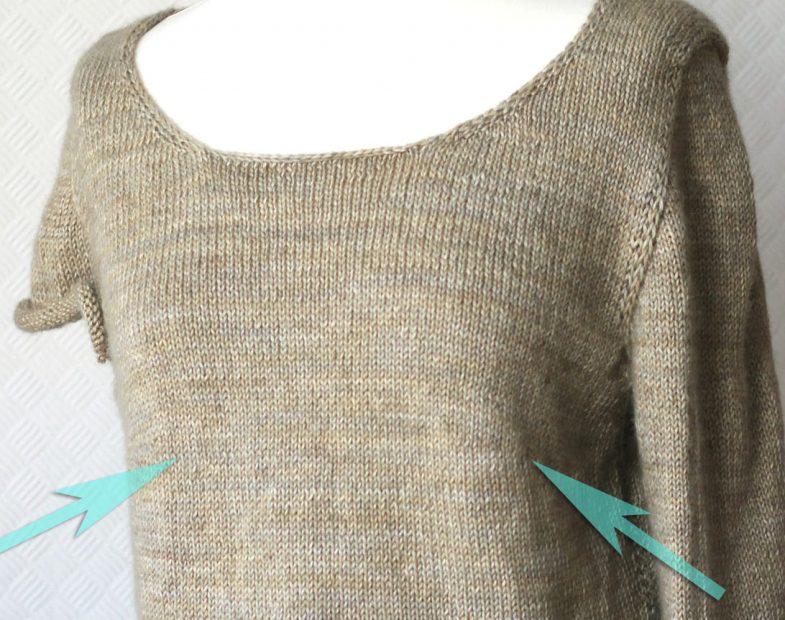
a photo tutorial
While the German short row is my go-to short row, the most inconspicuous is the Japanese short row. It is a bit more fiddly but also more precise. This is useful if you are knitting with a brighter yarn or one that has a sheen or a very clear stitch definition that doesn’t let you hide unevenness or tricksy moves.
Great for Bust Darts
I often use it for bust darts knitted with such unforgiving yarns.
Well, I now tend to use it for all bust darts in any yarn for the precision of it is so pleasing.
Abbreviations
Jsl1 hang removable marker on working yarn, knit/purl
next stitch with marker hanging on WS between this
stitch and the slipped stitch
Jk1 Knit to gap, pull on marker to place loop untwisted onto
LN, k2tog (next stitch and loop), remove marker
Jp1 Purl to gap, sl1, pull on marker to place loop untwisted
onto LN, sl1 to LN (the previously slipped st), p2tog
(slipped st and loop), remove marker
Let’s begin.
We are working in plain stocking stitch.
The photos are arranged in the order you would work Japanese Short Rows for a bust dart on a Ziggurat pullover knitted in the round.
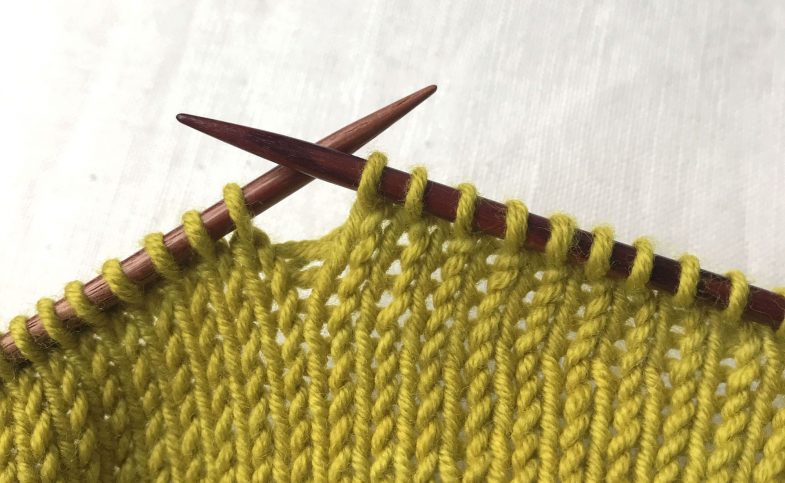
1. RS: knit to the point for turning.
Turn work over to work from WS.
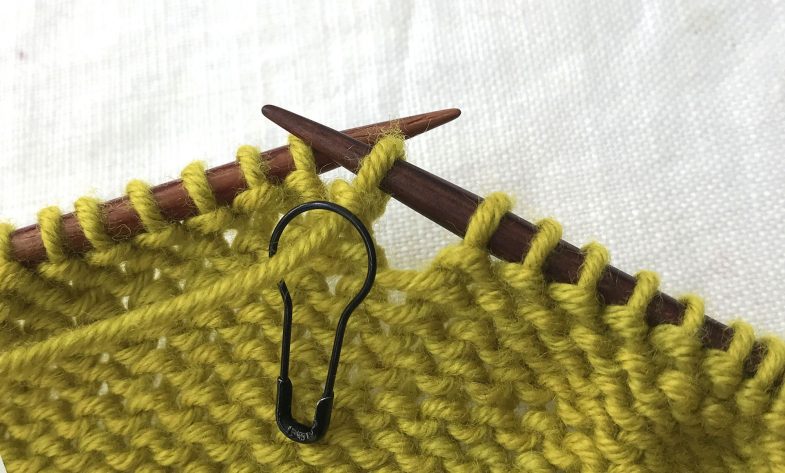
Hang a removable stitch marker on the working yarn, slip 1 purlwise with yarn in front, purl next stitch while making sure that the marker sits on the yarn between the slipped stitch and next stitch.
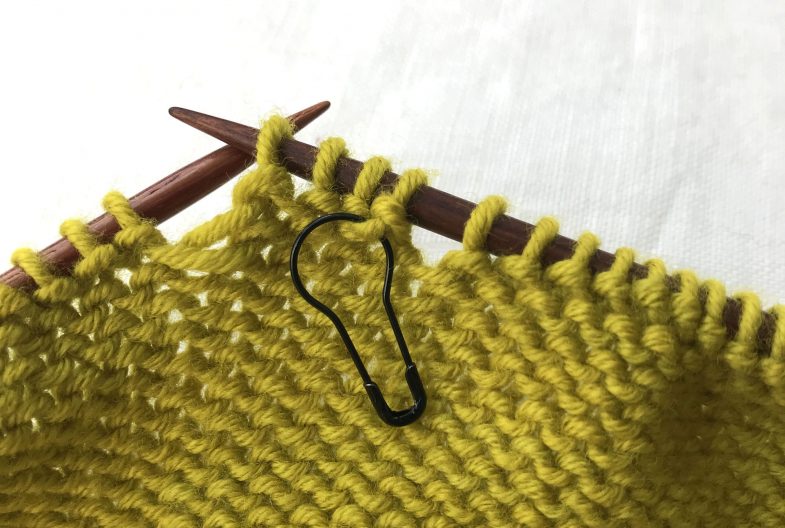
3. Marker is hanging on yarn between slipped stitch and next stitch.
Purl to next point for turning.
Turn work over to work from RS.
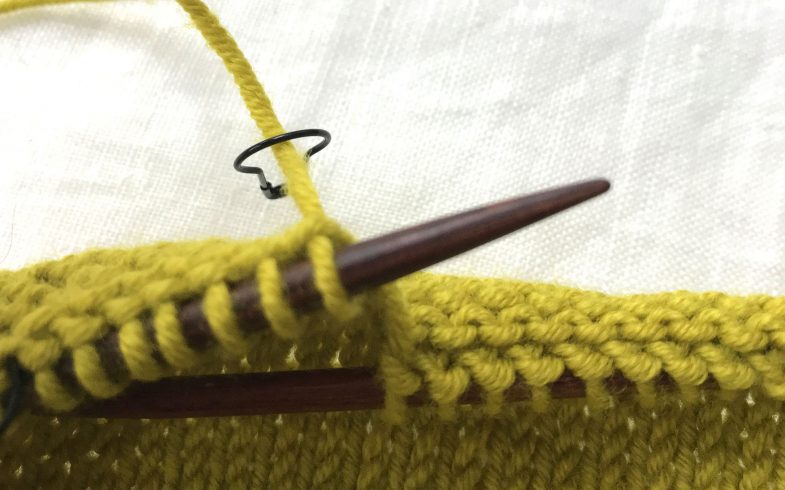
4. Jsl1 on RS: Hang a removable marker on working yarn on WS, behind needle.
Slip 1 stitch purlwise with yarn in back. Knit next stitch while making sure that the marker sits on the yarn between the slipped stitch and the next stitch.
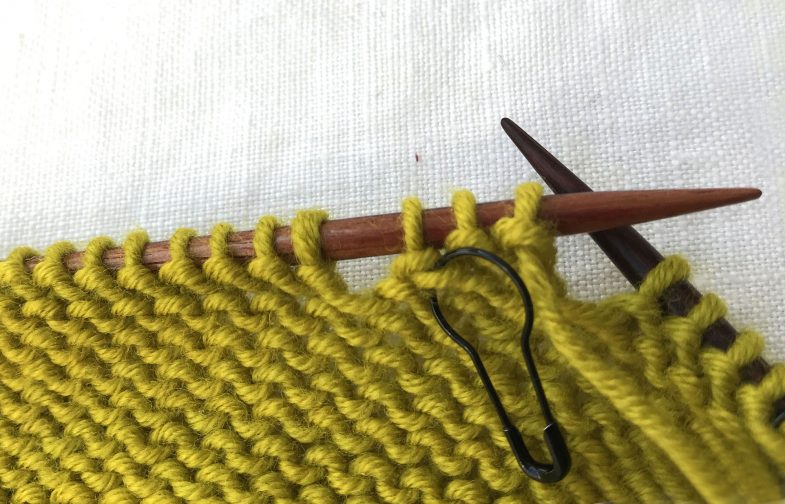
4a. VIEW from WS after 2 stitches have been knitted: Marker hangs on yarn between the slipped and next (knit) stitch.
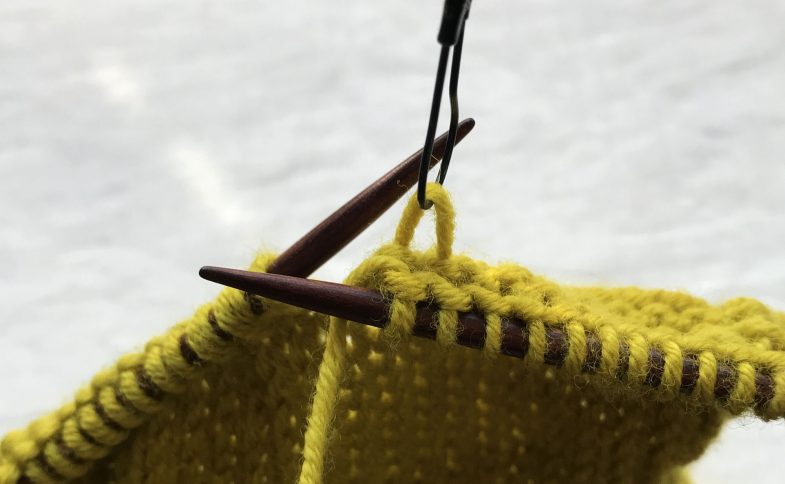
5. Continuing on RS: knit to the gap.
The marker from Step 2 sits on WS between the last 2 stitches on RN. Then there is a gap.
Take yarn to front (RS), pull on marker to make loop available.
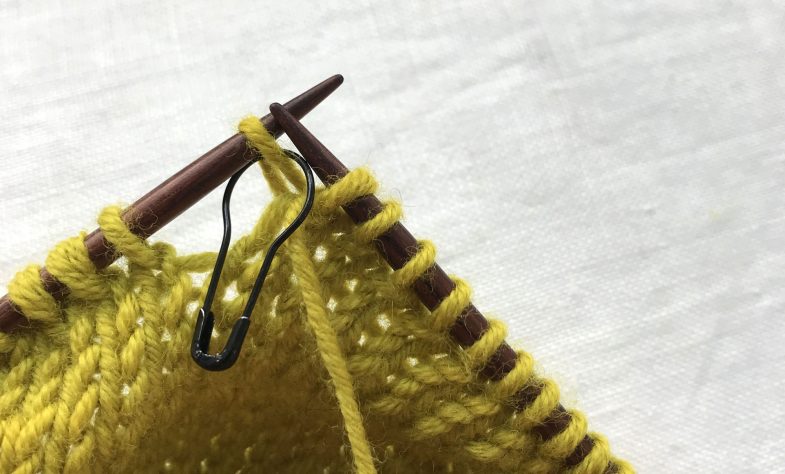
6. Keep yarn to front, place loop on LN, with its right leg to front (untwisted), remove marker.
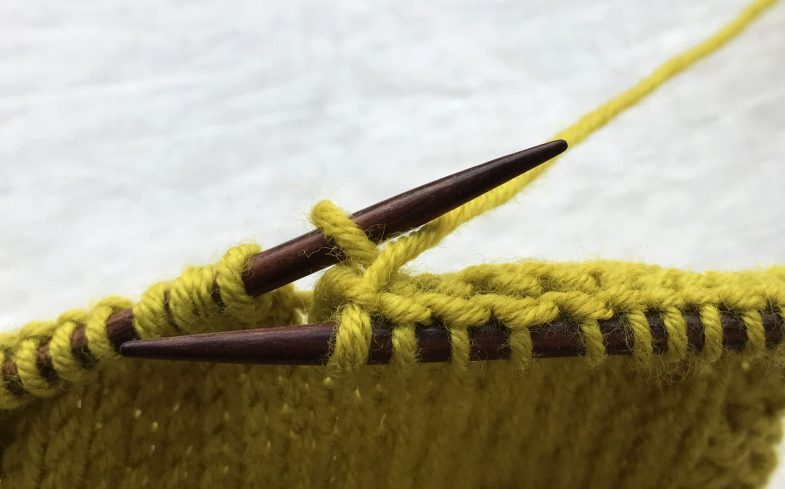
7. Take yarn to back between needles as shown.
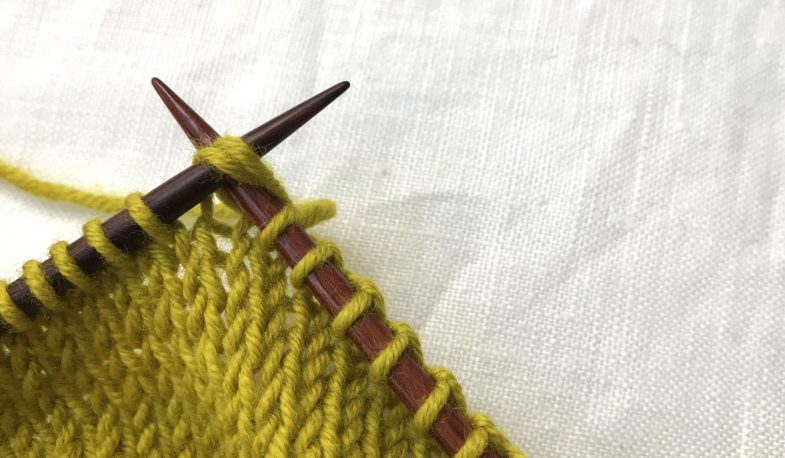
8. Knit 2 stitches together (the loop and next stitch).
Jk1 is done.
If working a bust dart, you will now repeat Steps 1 & 2 before continuing with Step 9.
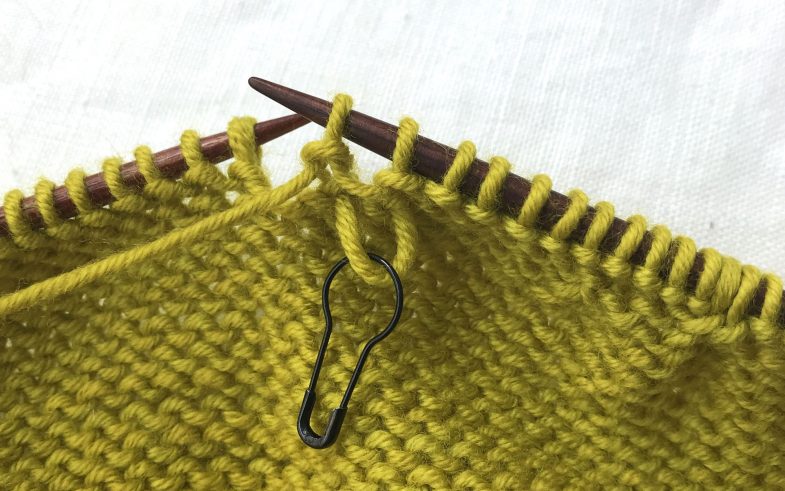
9. WS: Purl to the gap.
The marker sits between the last 2 stitches on RN.
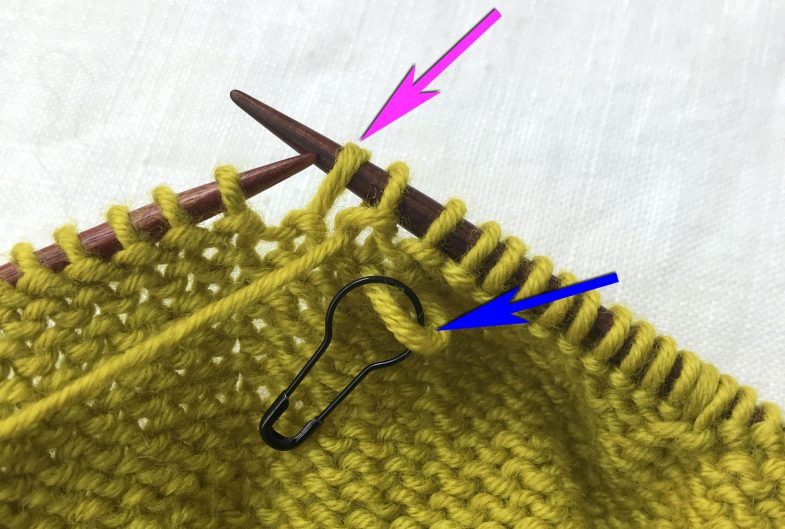
10. Slip 1 stitch purlwise (pink arrow).
Pull on marker to make loop (blue arrow) available.
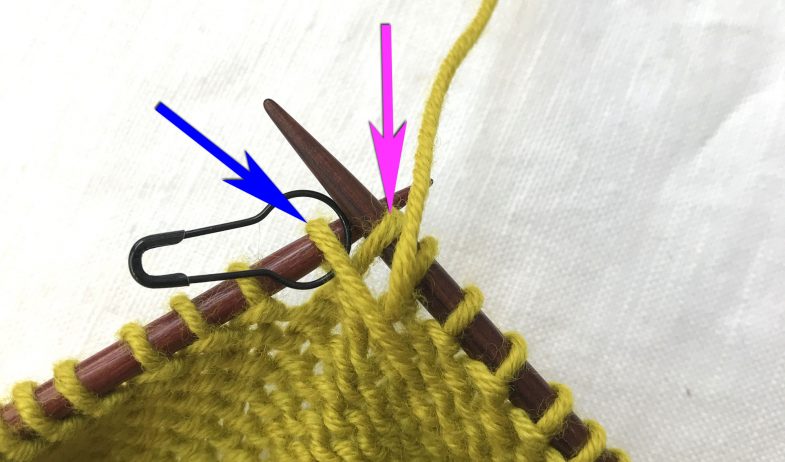
11. Place loop (blue) on LN with its right leg to front, going in front of working yarn and in front of the slipped stitch (pink) on RN, remove marker.
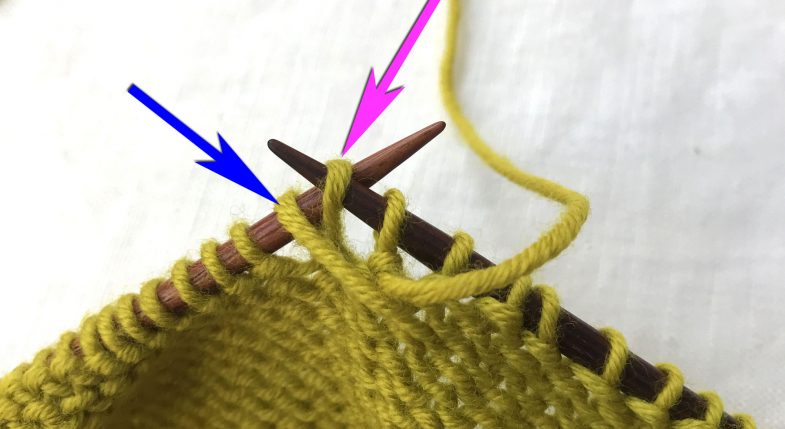
Blue arrow points to loop stitch.
Pink arrow points to slipped stitch.
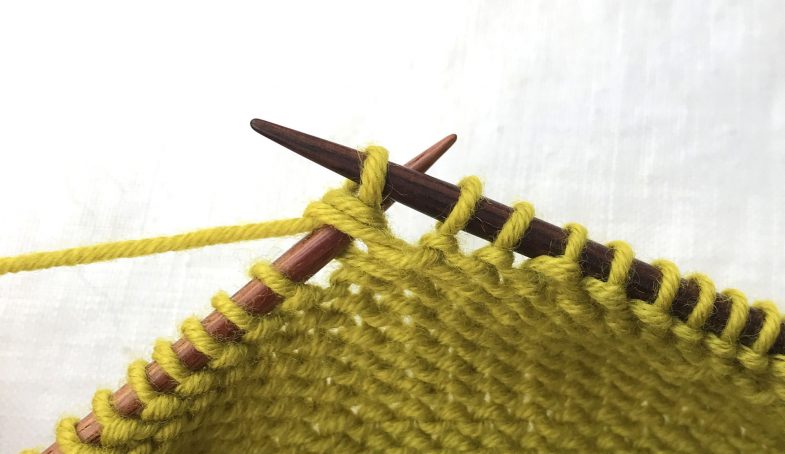
13. Purl 2 stitches together (the slipped stitch and the loop).
Jp1 is done.
14. Repeat from Step 3 to work as many short rows (and as many stitches after each turn) as directed in your pattern.
Wrapping things up
15. On the first normal round after the Bust Dart is completed, you will come across an unworked Jsl1. This final Jk1 is worked differently than that in Steps 5–8:
Knit to the gap, pass loop behind next stitch and place loop on LN, remove marker, knit 2 stitches together (next stitch and loop).
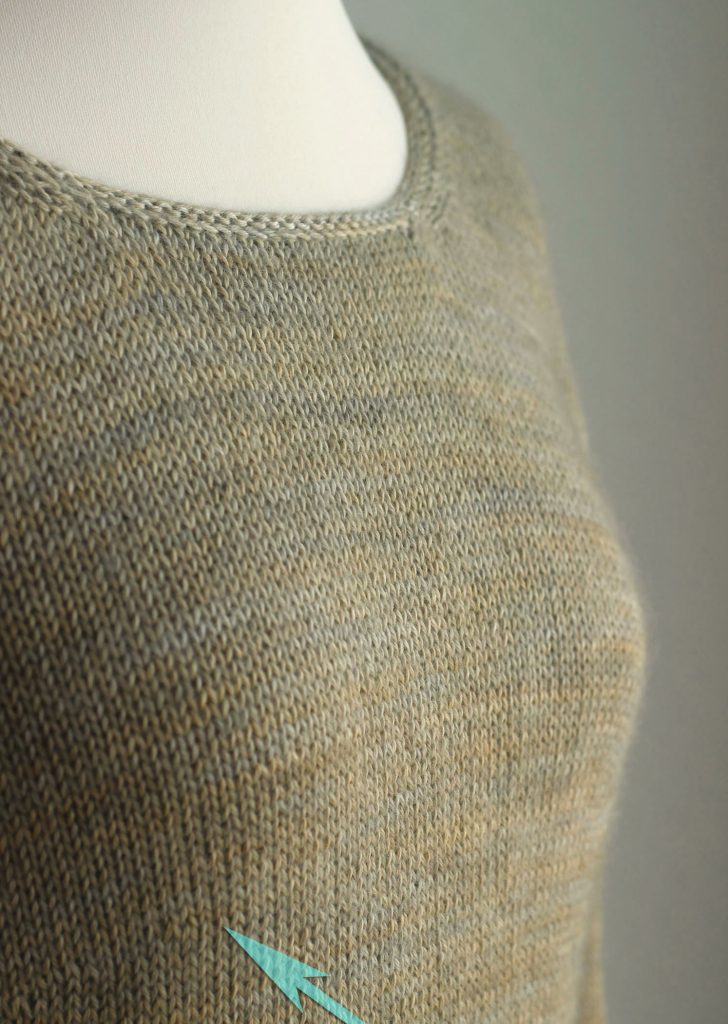
That’s it. Really. You have to look pretty closely to spot the short-row dart.
Yes, the dart sits too low on Greta – she is perkier than I.
Besides, the pullover (Chatoyant) was not knitted for her.
Want to know what else is up my knitted sleeve? Sign up for the occasional Åsa Tricosa Newsletter.

14 Comments
My pattern says to decrease by wrapping 2 sts. tog. How do I do this using the Japanese short rows method? Thanks
I’m not sure! Are you decreasing in a stitch pattern or in plain knitting? And do you want to decrease and make a short row at the same time?
It is such a great tutorial with so helpful pictures. I missed the last pic for #15, wrapping things up.
It is possible to show it with a pic, too.
Greetings Silvia
I’ll try to add that. Thanks for the tip!
How can I do Japanese short rows in garter stitch
That’s a good question! I think I have to try it before I reply… I will try it!
Beautifully clear description and photos of Japanese short rows. just about to use them on Bambasala! Thanks Asa!
Hi great tutorial! My pattern has me doing German short rows but I’ve only ever done Japanese and am wondering can I substitute that German for Japanese without messing up the pattern.
Hello Cara!
Yes, I know a very late response. Sorry!
The Japanese short row ‘consumes’ the following stitch, so if you substitute German, and ‘close’ the turn (k1^ or p1^), you need to take that into account.
(Either turn 1 stitch later – or, after closing the gap, knit/purl one less stitch)
Thank you for the bust darts idea and the Japanese short rows. I am trying this right away. This is such a good alternative to lengthening a garment to avoid pulling up and a too short front and to making a larger size to avoid stretched stitches over the bust with way too much fabric above. Makes good looking sleeveless tops possible.
A great tutorial. I do a lot of yoked sweaters that require short rows to raise the back of the neckline. Finally I have found a method that does not leave loose stitches. Thank you.
Excellent!
This appears to be the same as the method in Montse Stanley’s The Handknitter’s Handbook that she calls ‘The Catch’. The use of the locking markers makes it much easier.
Interesting! The Japanese short row is probably known by many other names and also with subtle variations. It is by no means anything that I have come up with – I only tried to make a clear tutorial of a technique that many knitters use and find useful.